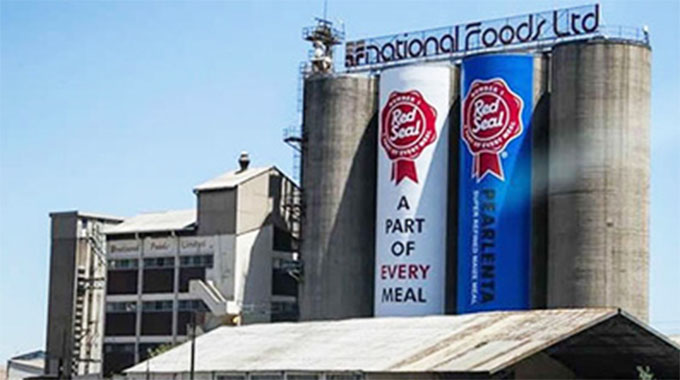Of wrong farming methods, natural resource mismanagement
Obert Chifamba Agri-Insight
UNTIL last Friday, I did not know that shifting cultivation is still being practised and that stream bank cultivation had also changed to “river” bed cultivation. Yes, this is happening in Mafungautsi State Forest, 11 kilometres south of Gokwe Town in the Midlands Province.
Mafungautsi Forest sits on approximately 82 100 hectares and falls under the category of woodlands and forests on state lands and protected areas. It was gazetted a state forest in 1954 in the then Rhodesia and retained that status even after independence.
Zimbabwe’s present Government allowed Mafungautsi Forest to retain its status after realising its national importance in reducing siltation of Lake Kariba, the country’s major source of hydro-electrical power.
It was gazetted primarily as a watershed of the Lutope, Ngondoma, Mbumbusi and Sengwa rivers that are all tributaries of the Mighty Zambezi River.
The forest lies on the Mafungautsi Plateau, which is over 1 200m in altitude and generally reaches maximum height at just over 1 300m.
Its land is generally flat and gently sloping towards vleis and rivers forming an undulating landscape.
Today, the forest is a pale shadow of the original Miombo woodland dominated by Brachystegia and Julbinadia globiflora trees and other important species that it used to be, thanks to settlement and agricultural activities by local communities.
Approximately 11 640ha of this forest land have now been turned into the site of four major illegal settlements- Ngondoma, Nyamazana, Zanda and Sengwa.
These people claim to have settled legally in the forest, yet Government regulations would not allow a gazetted forest to be used for human settlement, let alone agriculture.
As I moved around the area, I came face to face with river bed cultivation along Lutope and Sengwa rivers where some families have literally erected fences across the river basin and started growing crops.
Some even take advantage of the high moisture prevalence along the river bed to grow two batches of crops per season. As we speak some have completed harvesting their first crop and are busy planting the second batch while some have established gardens.
The course of the river has since changed though there are very high risks of floods washing away everything- crops and even people should rains fall excessively at any given point.
Now with the banks and basins of Lutope, Sengwa, Ngondoma and Mbumbusi rivers all turned into crop empires, the Zambezi River and Kariba Dam, will ultimately bear the brunt of heavy siltation induced by these illegal farming activities.
On the other hand, there are those families clearing space in the forest to settle and farm, which means they have to clear all the vegetation including important exploitable species of timber such as mukwa and teak that can be used commercially for furniture making. Grazing pastures are also perishing in the process, as some of the farmers use fire as their clearing agent.
Mafungautsi lies within agro-ecological region 3 of Zimbabwe that is characterised by a mean maximum temperature of 30 degrees Celsius and receives between 600 and 800mm of rain per year with a mid-season dry period always a sure thing.
The bulk of the forest and its surrounding areas are covered by Kalahari sands, which comprise deep unconsolidated tertiary sands of Aelian origin that are up to 75m deep.
The soils are well-drained, deep and have medium-grained sands, which makes them extremely infertile, a fact that severely limits their potential for crop production since they have low nutrient content and silt fractions (3 percent clay, 2 percent silt).
As a result of this, farmers are forced to use a piece of land just for one season and move to a fresh one the following season, which sees them clearing more trees and grass. The derelict land left behind is prone to erosion, which adds to silting of rivers while the nomadic families are also left food insecure every season.
Most of the households occupy land that is between four and five hectares big and if they need to do this every year, then it does not require a rocket scientist to see that Mafungautsi Forest just has a few seasons more of existence before the last tree is cleared off.
The villagers are also reportedly doing illegal hunting in the forest and killing big game, which has since become a rarity now as they seek safer habitats elsewhere.
The Forestry Commission, custodians of the forest, have since raised the issue of increasing veld fires in the forest and its adjacent communities that are wiping out vegetation and pastures leaving domestic animals without grazing space and food.
It seems communities around the Mafungautsi Forest are actually competing to annihilate the forest in which they are doing everything that can easily destroy and no one, including the traditional leaders is giving a damn about it.
Chief Njelele, whom some villagers blame for the chaotic situation in the forest has also distanced himself from it, conveniently blaming the provincial local government authorities for the mercy.
“They were allowed to settle there by the province. There is not much I can do. I have also been trying to evict some people that came after those authorised to settle by the province but the situation is just difficult. I am now engaging Forestry Commission and the Environmental Management Agency (EMA) to assist me,” he said when I quizzed him on what he was doing to save the forest.
Feedback: [email protected]






Comments